The ancient city of Bagan dates back to the 9th century, and is the most popular site in Myanmar. Every year, thousands of tourists and Burmese pilgrims visit the Unesco-listed complex. Nearly 10,000 monuments were erected between the 9th and 13th century during the reign of the Kingdom of Pagan, as it was known back then.
Nowadays, only an estimated 2200 monuments remain in Ancient Bagan. To help you navigate the extensive site, I put together a brief guide to the most compelling temples in Ancient Bagan.
Before entering the Bagan Archaeological Zone, visitors must pay the mandatory entrance fee of 25,000 kyats at one of the guarded posts situated on the outskirts of town. Tickets are valid for five consecutive days and give access to all the monuments in Bagan.

TABLE OF CONTENTS
ToggleGETTING AROUND IN BAGAN
The archaeological zone is huge and covers about 104 square kilometers so transport is essential. A few options are available for getting around Bagan. Renting a bicycle only costs 2000 kyats/day but is the most strenuous option.
Other options include hiring a tuk-tuk driver, renting an air-conditioned taxi or taking a tour by horse-drawn cart. However, the most popular choice is to rent an electrical motorbike (e-bike) for 8000 kyats/day. If you choose this option, make sure the battery is fully charged before you head out to explore.

WHERE TO STAY IN BAGAN
Bagan consists of four small settlements: Nyaung U, Old Bagan, Myinkaba and New Bagan.
New Bagan is the most recent development. This area offers expensive higher-end hotels with views of some temples or the Irrawaddy River. Old Bagan is considered to be the city center with a main street lined with local restaurants as well as a handful of older, budget-friendly accommodations. Further away along the main road are some of the most luxurious resorts in Bagan.
Nyaung U is completely geared towards tourists with restaurants offering western-style menus. There’s also a wide range of accommodation ranging from budget-friendly hostels to higher-end hotels. Tour operators and e-bike rental shops are aplenty in Nyaung U.
The small village of Myinkaba is mostly known for its lacquerware workshops. Accommodation is scarce and there really isn’t much to do besides shop for lacquerware.

WHAT TO EXPECT WHEN VISITING ANCIENT BAGAN
As with any tourist site, Ancient Bagan is rife with vendors selling souvenirs ranging from “elephant pants” to handicrafts to paintings. Most are locally-made but I suggest checking first.
There’s also a lot of kids selling postcards of Ancient Bagan. Most of them speak English or other languages very well. All of them say they collect money from around the world and whip out a stack of different currencies. If you ask them why they're not in school, they’ll quickly answer that the school day or year has ended. I'm not sure if these kids actually do go to school but that's a different topic altogether.

As mentioned previously, there are thousands of monuments scattered around Bagan but following are the ones we visited on a whim despite having a map. The monuments range in size from incredibly huge to only a few feet tall. Most monuments can be entered and explored through a series of corridors.
When we went in April 2016, we were allowed to climb to the top of the temples but it seems the government has put a ban on this since mid-2017. I don't know if this is going to change but keep in mind that some temples are permanently off-limits following the damaging earthquake in August 2016.
Now that we got all the logistics out of the way, let's explore the most compelling temples of ancient Bagan!

DHAMMAYANGYI TEMPLE
As the largest monument in Bagan, Dhammayangyi Temple can easily be seen from afar. The pyramidal temple was built in the form of a cross and is topped with several blunt stupas. Although Dhammayangyi Temple isn’t the most elaborate temple, its incredibly fine interlocked brickwork is worth noting.
It’s said that a pin can't pass through the mortarless layers. King Narathu made sure of this by threatening the slave builders with cutting off their fingers if he could see even the slightest ray of light coming through the piled on bricks.

Special feature: Inside the temple are two Buddhas sitting side-by-side, their faces adorned in gold leaves. These Buddha images represent Gautama, the current Buddha, and Maitreya, the future Buddha of this world.

ANANDA TEMPLE
Ananda Temple was built in 1105 A.D. but due to damages caused by the earthquake in 1975, it's been extensively restored making it the best preserved monument in Bagan. The presence of big voyager buses in the parking lot hint at the popularity of this temple especially among Burmese visitors.
It's hard not to miss the large spherical table at the main entrance where Buddhist devotees place monetary donations (for the upkeep of the temple?).

Special features: What makes the interior of this temple so different is the hundreds of niches housing various Buddha images. Another distinct feature is the four standing Buddhas all cloaked in gold. Each Buddha faces a different direction: North, South, East and West. Two of the Buddhas are the original wooden ones from the 11th century.


NATHLAUNG KYAUNG
Built in 931 A.D., Nathlaung Kyaung, dedicated to the god Vishnu, is the only remaining Hindu temple found in the Bagan Archaeological Zone which is predominantly Buddhist.
In an attempt to enforce Hinduism throughout his kingdom, King Anawrahta decided to keep non-Buddhist images in the Nathlaung Kyaung Temple. Nathlaung Kyaung translates as "shrine confining nat." Don’t miss this unique temple located to the west of Thatbyinnyu Temple!

Special feature: Stone carvings depicting Hindu deities.

SULAMANI TEMPLE
The vaulted ceilings of Sulamani Temple create a wonderful play on natural light giving it a very atmospheric and nostalgic setting. This temple has the most frescoes decorating its inner walls though they've been apparently restored over the years following the earthquake in 1975.
I'm sure the beautiful frescoes will keep you lingering much longer than you expected.


Special feature: Remember to look for the stunning fresco of this beautiful reclining Buddha.

SHWESANDAW PAGODA
With its symmetrically-built square base, the imposing Shwesandaw Pagoda is one of the highest in Bagan. It has five successive receding terraces going all around and the bell-shaped stupa sitting on top can be seen from miles around.
The circular top half of the pagoda is white-washed and the bottom half was left in its original state of red brick layering. Climbing the series of steep, narrow steps had my heart thumping as did the panoramic views!

HTILOMINLO TEMPLE
Located close to the road, Htilominlo Temple has a similar design to Sulamani Temple. Squiggly reliefs above the doors and a seated Buddha beckon visitors in.
The exterior fo Htilominlo Temple is incredibly intricate but the interior is surprisingly bare. Similar to most of the temples, Buddha images poised on pedestals are placed at each portico.

THATBYINNYU TEMPLE
Standing at 61 metres / 201 ft high, Thatbyinnyu Temple is the highest in Bagan, and is also one of the largest temples. The temple is used by pilgrims who can be seen kneeling in front of Buddha while making offerings.
I loved the black soot marks dripping on the whitewashed exterior. However, the interior was modern including electricity and a television.

Special feature: Two female guardians next to an altar of the Eastern portico .

SHWEGUGYI TEMPLE
Shwegugyi translates to "the Golden Cave", and is located in front of the Royal Palace of the ancient Kingdom of Pagan. It was constructed in 1131 A.D.. This small temple has hints of Hinduism such as the two nats (spiritual beings) seated at the main entrance.
Special feature: One of the only temples that has its integral history inscribed on two large stone slabs placed in front of the temple.

GAWDAWPALIN TEMPLE
One of the largest temples and the second highest in Bagan, Gawdawpalin Temple sits on the banks of the Ayeyarwaddy River. The temple was built by King Narapatisithu, and was completed by his son Htilominlo.
The style of this temple was common during that era. We didn't go to this temple but settled on only catching a glimpse of it from afar.

NAME UNKNOWN TEMPLE
Of course, that’s not the name of this tiny temple but I didn't take it down even though it's probably written on that stone slab. This was one of many temples we passed by while riding around Ancient Bagan. It was the only temple we visited that had statues of elephants.

Special feature: An image of two shoulder-to-shoulder Buddhas in a half-reclined position.

READ MORE ON MYANMAR
- Like in a Misty Dream on Inle Lake
- The Gold Pounders of Mandalay in Myanmar
- A Close Encounter with Yangon’s Most Dangerous Street Gang
- Olfactory Memories of Myeik
- The Biggest Reclining Buddha Image in the World
- Visiting Mount Kyaikhtiyo and the Sacred Golden Mount
- Thousands of Buddha Eyes Watching Over Hpa-An
- How to Make the Most of Your Time in Yangon
PIN THIS POST!

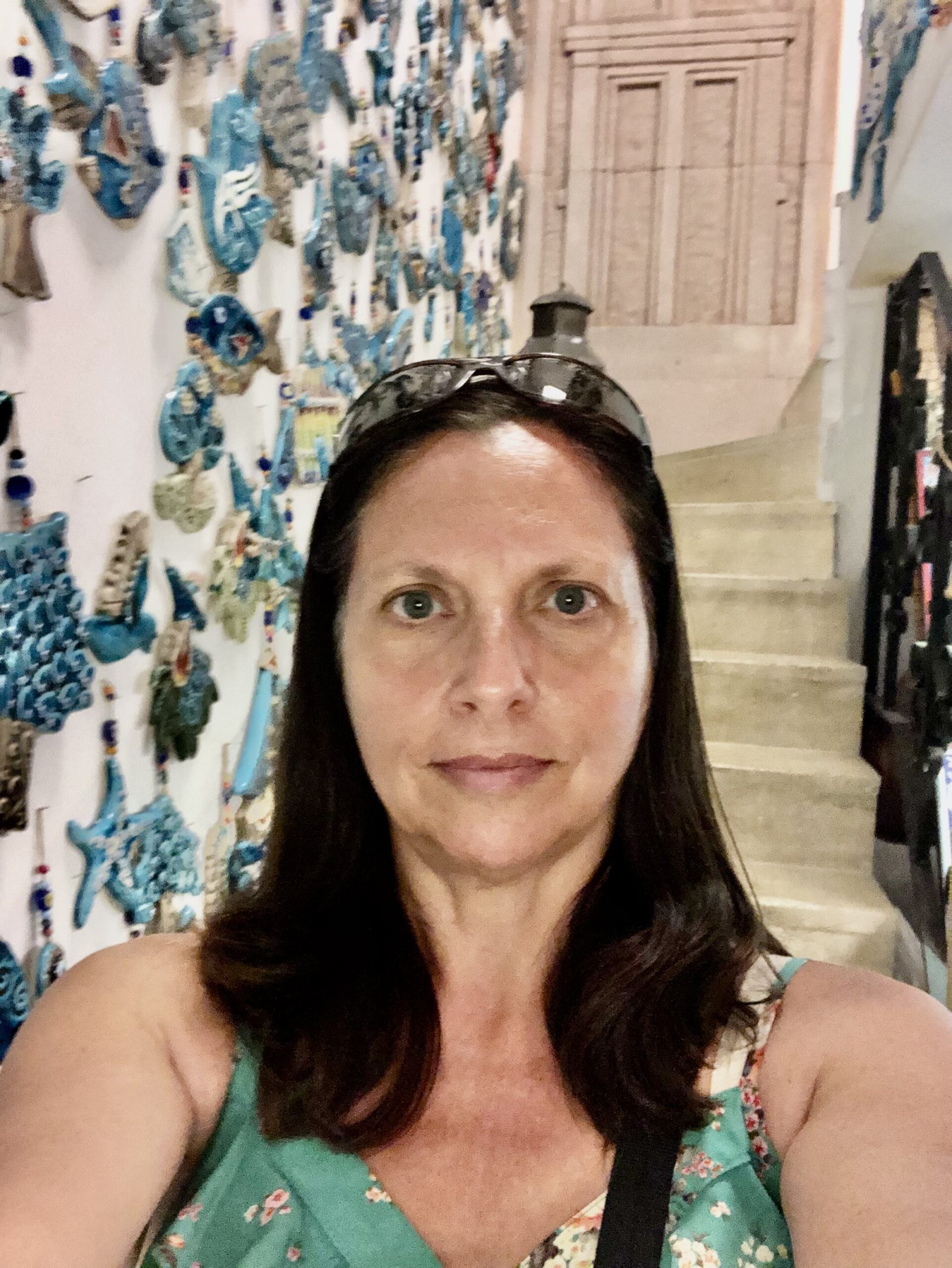


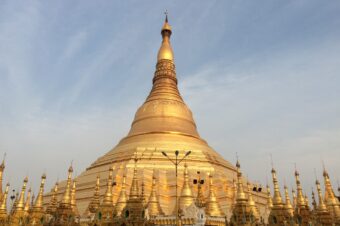
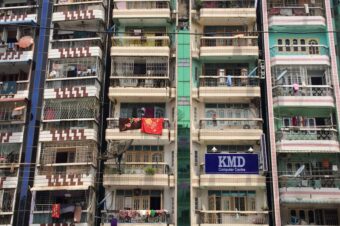
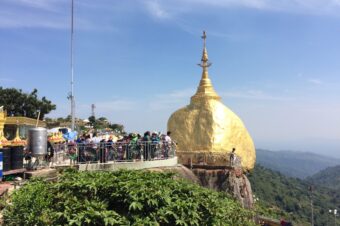
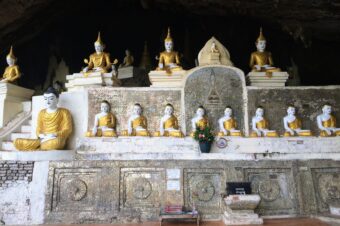
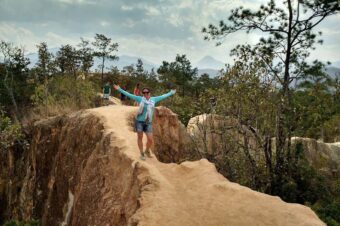
7 Responses
Olfactory Memories of Myeik - Life Untraveled
[…] A Brief Guide to the Most Compelling Temples of Ancient Bagan […]
Stepping Inside the Biggest Reclining Buddha Image in the World - Life Untraveled
[…] A Brief Guide to the Most Compelling Temples of Ancient Bagan […]
Visiting Mount Kyaikhtiyo and the Sacred Golden Rock - Life Untraveled
[…] A Brief Guide to the Most Compelling Temples of Ancient Bagan […]
Thousands of Buddha Eyes Watching Over Hpa-An - Life Untraveled
[…] A Brief Guide to the Most Compelling Temples of Ancient Bagan […]
How to Make the Most of Your Time In Yangon - Life Untraveled
[…] A Brief Guide to the Most Compelling Temples of Ancient Bagan […]
Ryan Biddulph
Hi Lydia,
Excellent.
You did a fine job covering the place.
We visited Bagan in March. Although my wife got ill during the trip I fell ill near the end of it – as we bused from Bagan to Inle Lake – I did enjoy the spot, big-time. I felt like Indiana Jones.
Heck, my wife dug the spot even though she was puking her guts out on the side of the road one day and laid in bed for the remainder of the trip. I only began loosing my food on the bus ride – which was highly unpleasant – but did enjoy biking from temple to temple, snapping pictures and soaking up the peaceful, ancient feel to the place.
Thanks for sharing Lydia.
Ryan
Lydia@Lifeuntraveled.com
Getting sick while traveling is awful but glad you enjoyed Bagan nonetheless (I don’t know how you managed to bike the site though in that heat!!)! Before going to Myanmar, we met a man in Thailand telling us everyone gets sick in Myanmar. I rolled my eyes reminding myself that I didn’t even get sick in India – I’m sure I could handle Myanmar! Well, I started getting fever in Bagan on our first day site-seeing. We had to go back to our room so I could rest. Luckily, it passed but it hit me hard while in Mandalay. I lay in bed for 5 days straight with high fever on and off but, thankfully, I didn’t vomit (or launch any bodily fluids from other orifices….lol!). I think I had a sunstroke because of the crazy heat. :